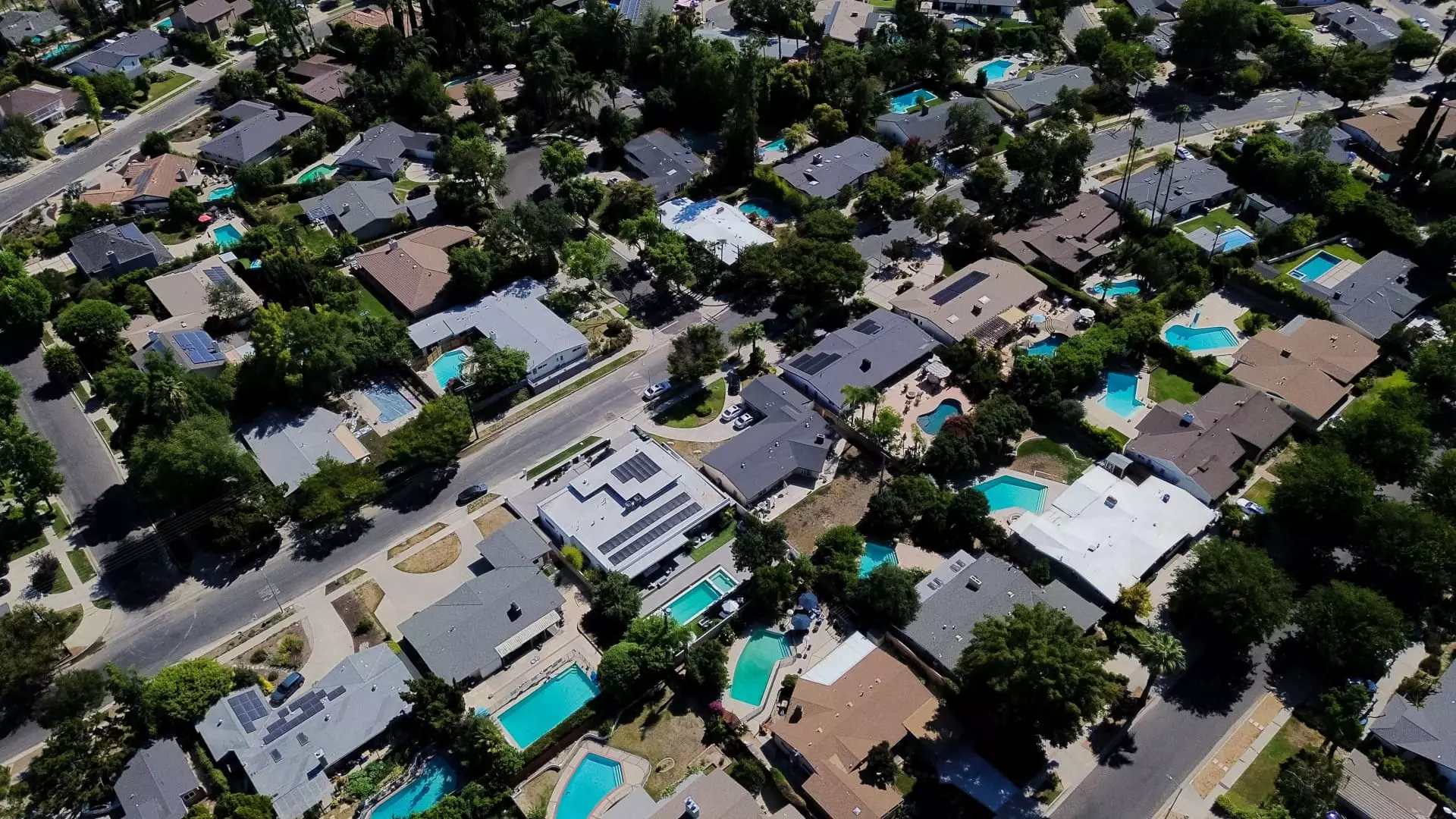The latest figures from the National Association of Realtors reveal a housing market that appears temporarily resilient on the surface but masks a deeper malaise that threatens long-term stability. With sales dropping by an unexpected 2.7% in June—far surpassing analysts’ modest expectations—there are clear signs of underlying fragility. While the headline figures may seem to suggest a sluggish but manageable slowdown, a closer look exposes the persistent squeeze on first-time buyers and the growing affordability crisis. The fact that sales are flat compared year-over-year, despite the increase in homes for sale, underscores a market hamstrung by high mortgage rates and supply constraints that favor the wealthy and leave ordinary Americans behind.
The central issue isn’t merely the number of transactions but the quality and accessibility of opportunities for the average buyer. With mortgage rates stubbornly hovering around 6.77%, homes become prohibitively expensive for many. Although rates might seem manageable compared to the panic of rates above 7% earlier this year, they remain a significant hurdle, discouraging many first-timers from entering the market. The prospect of paying astronomical prices for homes—amid stagnant wages and rising living costs—creates a perfect storm that restricts upward mobility and deepens wealth gaps. The market’s apparent resilience is therefore illusory, powered increasingly by high-end sales and cash deals rather than true market health.
Supply and Price Dynamics: An Unhealthy Balance
While more homes are now on the market—up approximately 16% year-over-year—the market remains tight, with a six-month supply still considered a seller’s environment. The increase in inventory is a double-edged sword: it signals some slowing but not enough to alleviate the pressure on buyers. The median price hitting over $435,000 for June, marking a 2% increase year-over-year, further cements the narrative that housing affordability is out of reach for most Americans. This sustained price growth, now at a 24-month streak of continuous annual gains, is driven primarily by supply shortages fueled by underbuilding and zoning restrictions.
This scarcity particularly disadvantages first-time buyers, whose share of sales has dropped to just 30%, from a typical 40%. Meanwhile, the upper-end of the market continues to outperform, with homes priced above $1 million rising by a remarkable 14%. Such disparities highlight the widening wealth gap—where property becomes increasingly a playground for the affluent rather than a cornerstone of middle-class stability. The regularity with which homes stay longer on the market (average of 27 days versus 22 a year ago) signals sluggish demand for the median-priced home, contrasting sharply with the brisk sales of luxury homes. This divergence illustrates a bifurcated market, where wealth inequality manifests physically in the housing landscape.
The Stark Reality of a Stalled Market
One of the most troubling aspects is the stark decline in first-time buyer participation, which now accounts for only 30% of sales. Historically, this segment has comprised around 40%, reflecting a healthier, more balanced market. The decline reveals a reality in which housing is increasingly out of reach for those who need it most—the young, the newly employed, and middle-income families.
In tandem, high cash sales—constituting nearly 30% of transactions—highlight an uneven landscape where wealth accumulates quietly among the already privileged. This high prevalence of cash deals reduces market liquidity and suggests that many transactions are driven by investors or affluent buyers, rather than genuine owner-occupiers seeking a home. The reduced number of offers per listing, down slightly from last month and significantly from last year, signals waning buyer enthusiasm or capacity, further hampering a recovery.
This scenario suggests that the housing market, under the guise of steady or slightly declining sales figures, is increasingly skewed away from its traditional role as a conduit for social mobility. Instead, it morphs into a tool for asset accumulation among the wealthy, exacerbating longstanding inequalities. The apparent resilience is superficial—what remains is a fragile, divided market where affordability crises threaten to undermine broader economic stability and social cohesion. The current state underscores a need for bold policy interventions and a fundamental rethink of housing affordability and supply to prevent an even more divided future.


Leave a Reply